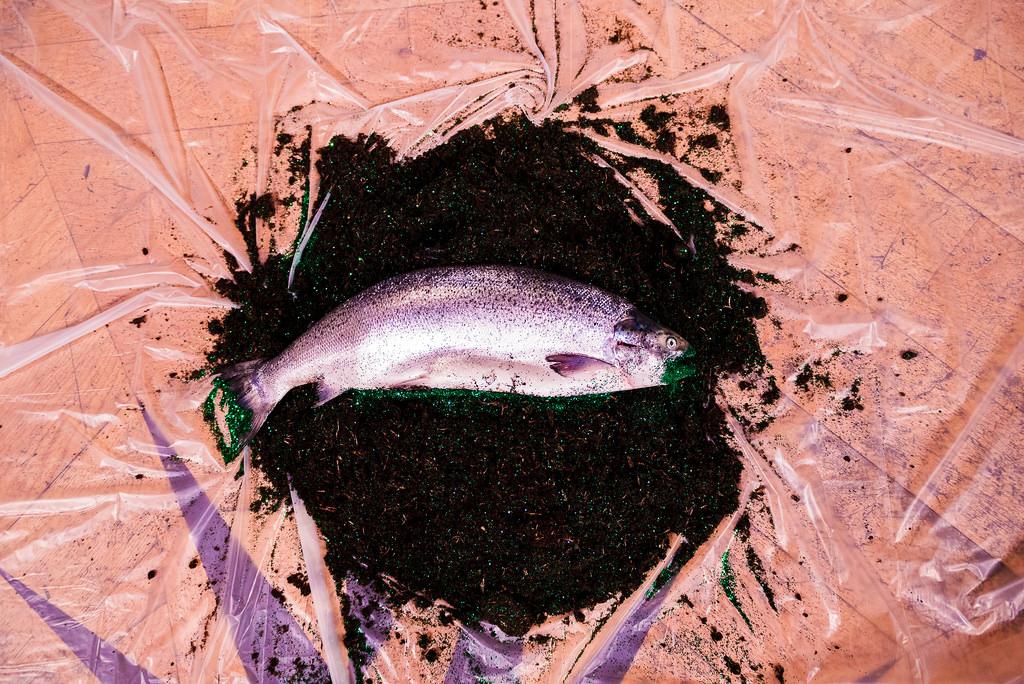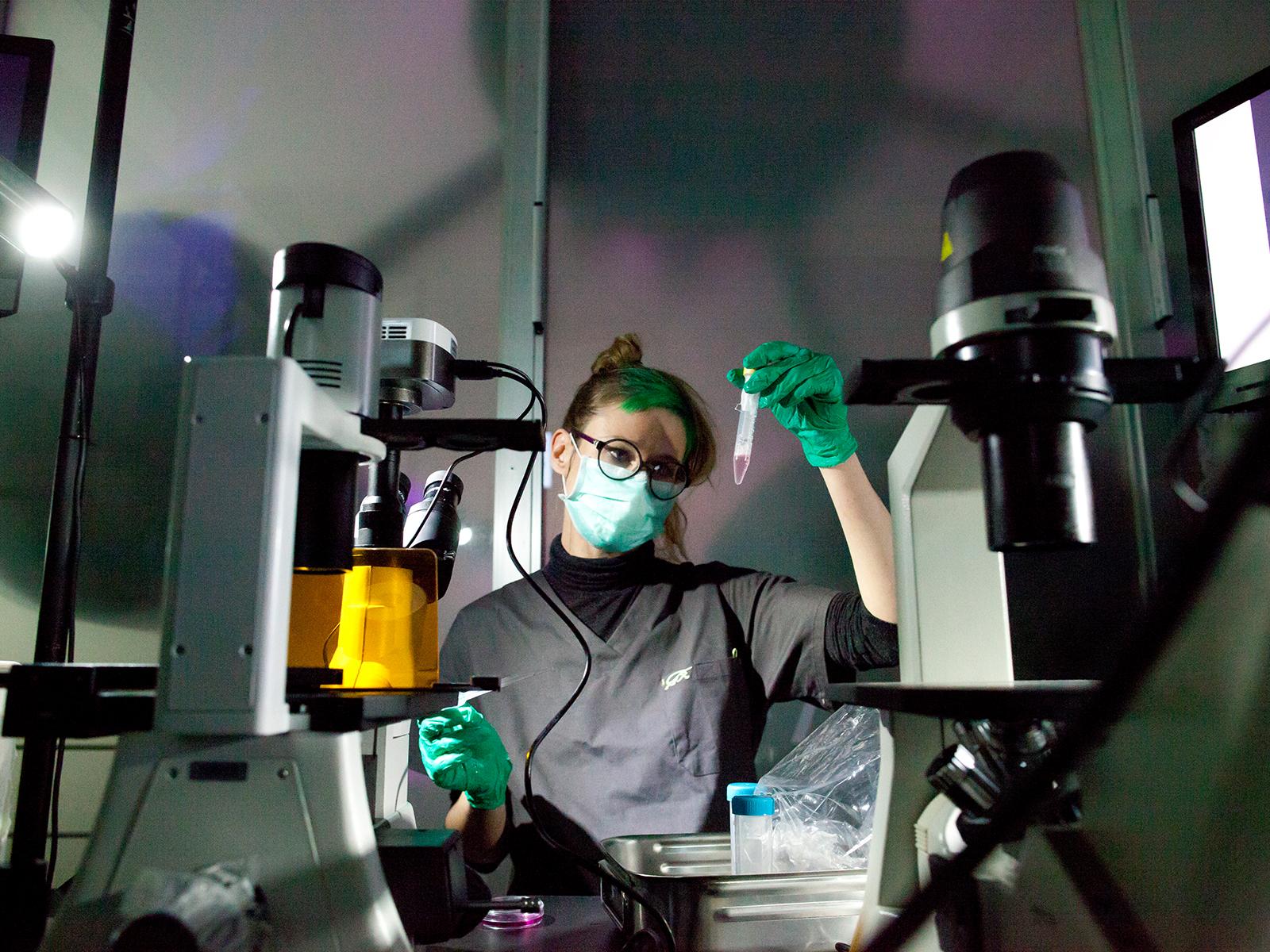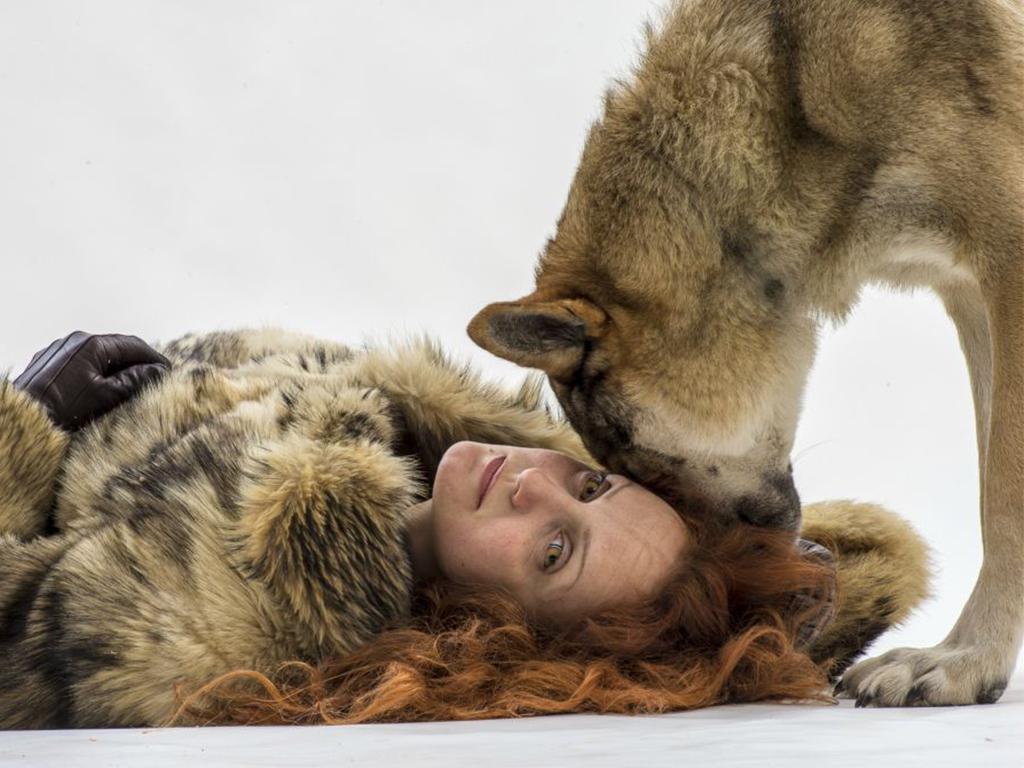Trust Me, I'm An Artist is a provocative concept wherein artists explore the ethical limits of upcoming (bio)technologies. New is the fact that they, as is practice for scientists, need to justify themselves for an ethics committee. Prof. Dr. Sabine Roeser was part of such a committee twice. "That experience really made me think." Last opportunity to visit the exhibition Trust Me, I'm An Artist (organised by Waag) is the weekend of June 24 & 25th.
"A few years ago I had an enormous brainwave when I discovered artists who work with new technologies. My new research topic, I thought", Prof. Dr. Sabine Roeser, Professor of Ethics at TU Delft, enthusiastically tells me on the phone. "I was interested to find out how these works can contribute to critical thinking about the moral aspects of new technologies, also considering the fact that art often affects us emotionally."
In earlier research she already pointed out the importance of emotions in debates about the risks of new technologies, as they can provide us with important moral insights. "Fear of the negative effects says more about the impact of new technologies on our daily lives then just numbers and statistics. Emotions like sense of responsibility, outrage or disgust uncover several moral insights that are hard to detect when we look at technologies in a purely scientific way."
Fluorescent rabbit
Because of their provocative nature and their tendency to uncover new dimensions, artworks are very well equipped to bring the moral aspects of new technologies into the open, says Roeser. "By definition artists think out-of-the-box, search the limits and go beyond what is scientifically justifiable or expectable." Sometimes this leads to agitation, think of the fluorescent rabbit Alba of Eduardo Kac. Many scientists thought it cast a shadow on genetic manipulation. Roeser, educated as an artist herself, says smilingly that some scientists have the idea that artists could be helpful explaining controversial researches to society. "Like: it is all fine and safe what we are doing. Well, then they should hire a marketing agency! Artists, and scientists alike for that matter, should be independent, otherwise you undermine what they're so good at.” She too gets asked now and then how researchers and industry can make sure the public accepts new technologies. “But that is not what I'm interested in, I care about the moral reflection. In the end that should lead to what we call socially responsible innovation, which means insight in how new technologies can develop in a morally responsible way."
Self-censorship
The artworks in the exhibition Trust Me, I'm An Artist are the result of a series of performances that took place between 2015 and 2017 in various European city's. During these events artists proposed and presented an ethically complex artwork to an ethics committee. Unlike what is common in science, the ethical reviews were accessible to the public. "What interested me while taking place in the committees, was the question: can artist do stuff scientists cannot?", says Roeser. She is chairperson of the Human Research Ethics Committee, where all research involving human subjects at TU Delft, even when it's a survey or an interview, is reviewed. "We apply very strict rules and regularly ask for adjustments. But what do we do with artists who operate in the same field?"
An example is the performance of the work Cellular Propeller, in which artist Howard Boland applied self-censorship in a sense. Initially he worked with heart cells of rats, just as biotechnologists do. Roeser: "In their case it is justified because they are searching for medical breakthroughs, Boland thought. He argued that in his case, it was less justifiable to cause animals harm, so he decided not to go through with it. Very noble, but in my view his work lost some of its power because of this choice. Initially it was a very beautiful, subtle work, with floating, whirling heart cells that looked like little propellers. Eventually he ended up using his own sperm in a race between the sperm cells as a commentary on ideals of masculinity. So it might be the case that more ethically justifiable work is less challenging artistically."
Trilemma
According to Roeser this particular case illustrates a complicated trilemma. "On the one hand artworks can shed light on the ethical aspects of these technologies, but there are also ethical considerations to the artworks themselves. It is not yet clear what is the best way to handle this: apply the same rules as we do in science since the risk of doing harm is the same? Or should artists be given more freedom – often their work is more low key and has less impact. Or should we enforce stronger rules to artists, as Boland did to himself? But do we do justice to the autonomous and critical role of art when we evaluate it more strictly than science? I think it would be interesting to do further explore this trilemma." And that's how participating in Trust Me, I'm An Artist has added another dimension to her work. "I probably wouldn't have thought of that without being part of Trust Me."
The other performance Roeser witnessed was Be-wildering by Jennifer Willet and Kira O’Reilly. The artists did not stick to the agreed format but toyed with it, what led to some debate within the ethics committee. "I thought it was rather amusing, what else can you expect of artists? It led to reflection on a metalevel: one starts to think about one’s own role as a committee and the format itself."
Glitter
Works of art can also provoke emotions that can lead to a deeper insight into moral aspects of a technology. Roeser had a deep emotional experience during the performance, when one of the artists, Kira O’Reilly, poured green glitter on a dead salmon. “Never in my life could I've foreseen how beautiful this would be, I think we were all speechless. What it ethically exactly calls upon... I had mixed feelings, because you feel compassion for that enormous fish, that was also handled with a lot of respect. The scattering of the glitter on the dead salmon really was a sublime aesthetic experience, impossible to put into words. At the same time it makes you reflect on the way we treat nature. As a committee we suggested to use biologically degradable glitter; it would be unfortunate that while raising a serious problem one also contributes to it while doing that. The execution was done with a lot of respect for nature, very delicate. In that sense, a performance like this sends out a much stronger message then just a theoretical discussion.”
Is there a future for projects like Trust Me, I'm An Artist? If it's up to Roeser, there is. "Many artists are fascinated by new technologies and play with their ambiguities. This can be helpful to think explicitly and critically about the moral pros and cons. Maybe sometimes it will lead to works that don't seem t the point at first or make things even more complicated then before. The solution is to provide a big 'playground' for artists, diversity will naturally lead to a variety of viewpoints. After all, artists do not like to follow, if possible they will all try out something different."



